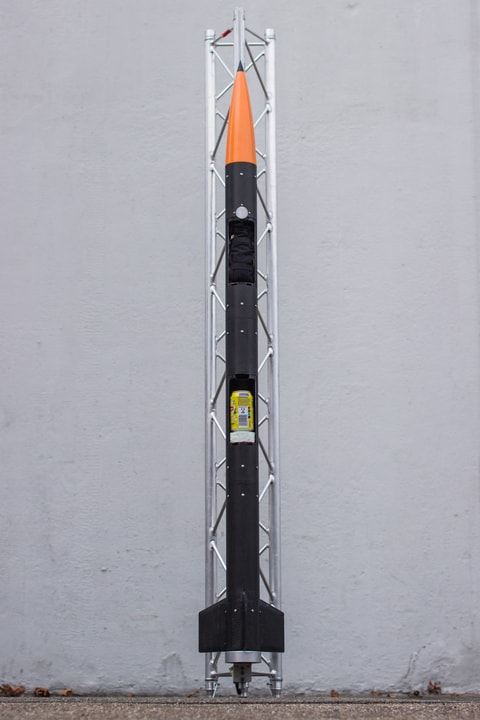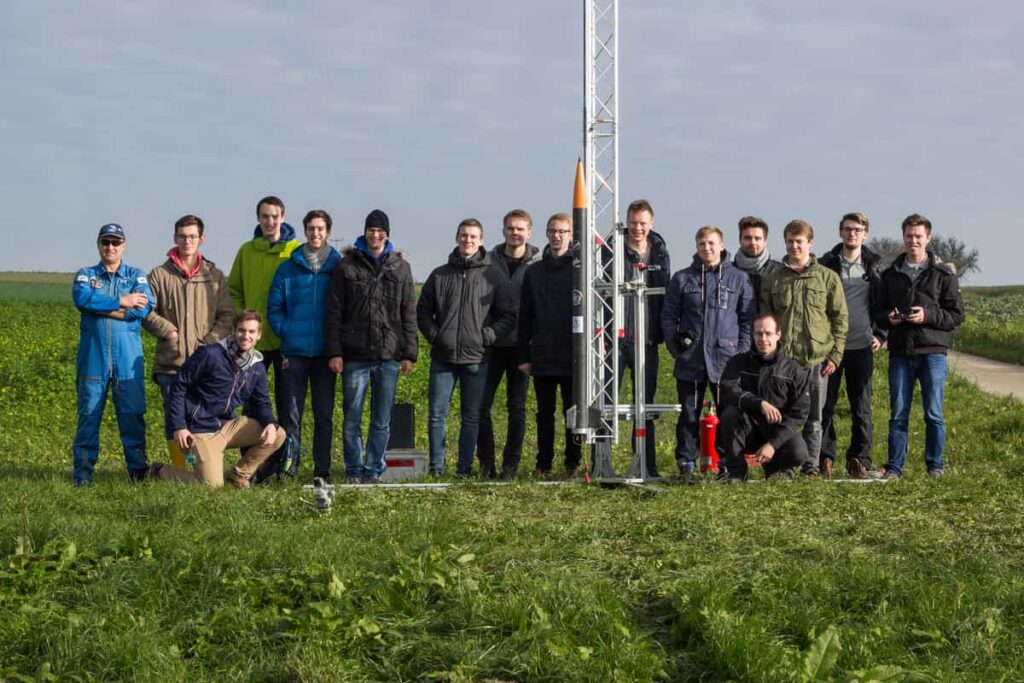After the successful launch campaign of HEROS, which was part of the DLR STERN-Project, HyEnD subsequently started working on another project. The CanSat Launcher allowed us to gain deep insights into the process involved in building a rocket and reaching the mission objective of successfully deploying a CanSat payload at an altitude of approximately 450 metres. The CanSat itself was designed and built by another student group, named KSat. New HyEnD members learned to design, build and launch a rocket, gaining experience crucial for ambitious future HyEnD projects. Since January 2017, HyEnD members have discussed many different options for the structure of the hull, the recovery system, the electronics hardware needed for the pyro charge deployments, and of course the engine. After evaluating many different options, students have chosen the most suitable design for the task at hand.
For the first time in HyEnD history, a solid motor was used to ensure as little downtime as possible. All parts, including the drogue and main chutes, were produced either at the HyEnD facility at the University of Stuttgart, or the DLR in Lampoldshausen, and then thoroughly tested to ensure that everything works satisfactory. The brain of the rocket is once again the TeleMega microcontroller, responsible for deploying all pyro charges. Also, a Cortex M3 microcontroller with an IMU (Inertial Measurement Unit) and a SD DataLogger are part of the electronics system. These components were programmed to take measurements at high rates and calculate height, velocity and orientation of the rocket. In the long term, this data will be analyzed and used to come up with the software needed to guide the rocket on a set trajectory. The CanSat Launcher’s maiden launch was on November 15th, 2017. It successfully propelled a CanSat made by student team KSat to an altitude of 453m, where it was ejected. The recovery system worked flawlessly and the rocket is ready to be launched again. We are currently analysing the data recorded by our on-board electronics.





